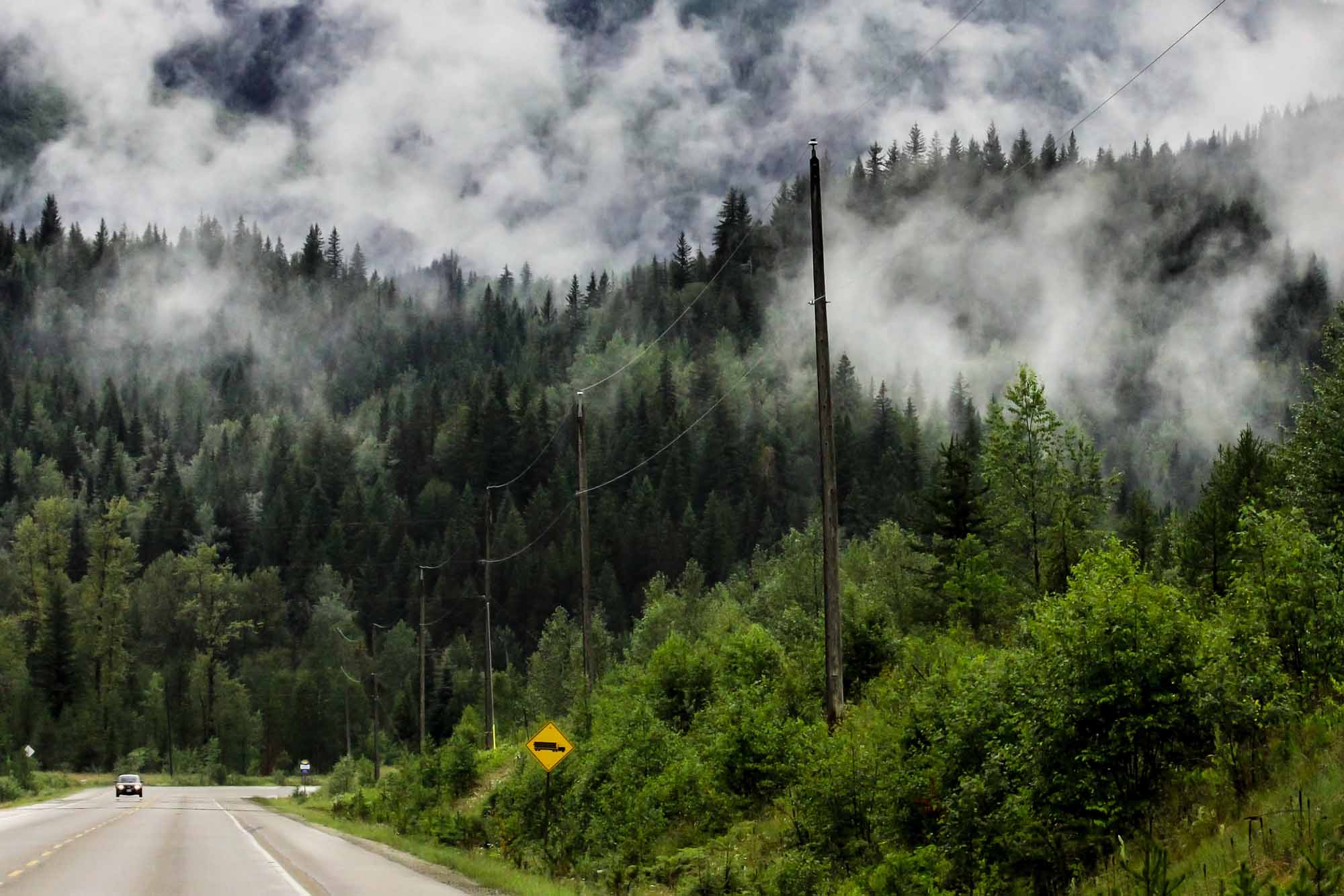Browse "Natural resources"
-
Article
Bitumen
One of the easiest ways to understand bitumen is to compare it to its cousin, conventional crude oil. Whereas conventional crude oil flows freely, bitumen does not. At room temperature it looks like cold molasses, and must be either heated or diluted before it flows.
"https://d2ttikhf7xbzbs.cloudfront.net/media/media/5b3c7c5d-d083-4c67-9b18-611af4e00f75.jpg" // resources/views/front/categories/view.blade.php
https://d2ttikhf7xbzbs.cloudfront.net/media/media/5b3c7c5d-d083-4c67-9b18-611af4e00f75.jpg
-
Article
Canada Land Inventory
Canada Land Inventory is a comprehensive federal-provincial survey of LAND capability and use for regional resource and land-use planning established under the Agricultural Rehabilitation and Development Act in 1961.
"https://development.thecanadianencyclopedia.ca/images/tce_placeholder.jpg?v=e9dca980c9bdb3aa11e832e7ea94f5d9" // resources/views/front/categories/view.blade.php
https://development.thecanadianencyclopedia.ca/images/tce_placeholder.jpg?v=e9dca980c9bdb3aa11e832e7ea94f5d9
-
Article
Coal in Canada
Coal is a fossil fuel that has been used as a source of energy in Canada since the 18th century. Canada is home to 0.6 per cent of the world’s coal resources. Most of the country’s coal reserves (over 95 per cent) are found in Alberta, British Columbia and Saskatchewan. In recent years, the environmental movement has opposed the coal industry for disrupting local ecosystems, creating adverse health effects and for its large contribution to the carbon-dioxide emissions that drive climate change. In an effort to curb harmful emissions, the federal government has signalled its intention to phase out traditional coal-fired electricity by 2030, and Alberta has a plan to achieve the same goal as a province.
"https://d2ttikhf7xbzbs.cloudfront.net/media/media/e219080a-2cd3-443e-baac-53a621e2b160.jpg" // resources/views/front/categories/view.blade.php
https://d2ttikhf7xbzbs.cloudfront.net/media/media/e219080a-2cd3-443e-baac-53a621e2b160.jpg
-
Article
Cod Moratorium of 1992
On 2 July 1992, the federal government banned cod fishing along Canada’s east coast. This moratorium ended nearly five centuries of cod fishing in Newfoundland and Labrador. Cod had played a central role in the province’s economy and culture. The aim of the policy was to help restore cod stocks that had been depleted due to overfishing. Today, the cod population remains too low to support a full-scale fishery. For this reason, the ban is still largely in place. Click here for definitions of key terms used in this article.
"https://d2ttikhf7xbzbs.cloudfront.net/media/new_article_images/CodMoratoriumof1992/Harbour_Grace_Douglas_Sprott_flickr.jpg" // resources/views/front/categories/view.blade.php
https://d2ttikhf7xbzbs.cloudfront.net/media/new_article_images/CodMoratoriumof1992/Harbour_Grace_Douglas_Sprott_flickr.jpg
-
Article
Commission of Conservation
Commission of Conservation, established 1909 to provide Canadian governments with the most up-to-date scientific advice on the CONSERVATION of human and natural resources.
"https://d2ttikhf7xbzbs.cloudfront.net/media/media/53d34b2e-01bc-41b9-9770-72b430fceec7.jpg" // resources/views/front/categories/view.blade.php
https://d2ttikhf7xbzbs.cloudfront.net/media/media/53d34b2e-01bc-41b9-9770-72b430fceec7.jpg
-
Article
Commodities in Canada
In commerce, commodities are interchangeable goods or services. Many natural resources in Canada are viewed as commodities. They are a major source of the country’s wealth. Examples of commodities include a barrel of crude oil, an ounce of gold, or a contract to clear snow during the winter. Commodity products often supply the production of other goods or services. Many are widely traded in futures exchanges (see Commodity Trading).
"https://d2ttikhf7xbzbs.cloudfront.net/media/new_article_images/EconomicsSummaries/dreamstimeextralarge_35143531.jpg" // resources/views/front/categories/view.blade.php
https://d2ttikhf7xbzbs.cloudfront.net/media/new_article_images/EconomicsSummaries/dreamstimeextralarge_35143531.jpg
-
Article
Dam
A dam is a structure built across a waterway to control or stop the flow of water. This is called impounding the flow of water. Dams can be built by animals, such as beavers, or constructed by humans. In some cases, they are even formed by natural geological forces.
"https://d2ttikhf7xbzbs.cloudfront.net/media/new_article_images/Dam/Dam.jpg" // resources/views/front/categories/view.blade.php
https://d2ttikhf7xbzbs.cloudfront.net/media/new_article_images/Dam/Dam.jpg
-
Article
Department of Natural Resources
The Department of Natural Resources was established in 1993, replacing Energy, Mines and Resources as a federal agency. Some of the department's components have long histories. The Department of Mines, created in 1907, was reorganized as the Department of Mines and Resources in 1936.
"https://development.thecanadianencyclopedia.ca/images/tce_placeholder.jpg?v=e9dca980c9bdb3aa11e832e7ea94f5d9" // resources/views/front/categories/view.blade.php
https://development.thecanadianencyclopedia.ca/images/tce_placeholder.jpg?v=e9dca980c9bdb3aa11e832e7ea94f5d9
-
Article
Energy
The term "energy" is often used interchangeably with the term "power," but incorrectly so. Energy is defined as the capacity to do work and is measured in joules (J) or watt hours (1 Wh = 3600 J).
"https://development.thecanadianencyclopedia.ca/images/tce_placeholder.jpg?v=e9dca980c9bdb3aa11e832e7ea94f5d9" // resources/views/front/categories/view.blade.php
https://development.thecanadianencyclopedia.ca/images/tce_placeholder.jpg?v=e9dca980c9bdb3aa11e832e7ea94f5d9
-
Macleans
Energy Alternatives Getting Insufficient Government Support
CANADIANS ARE now committed to the reduction of greenhouse gas emissions under the Kyoto Protocol, even though Ottawa may not have a well-developed plan. But Dean Scammell does, and he's a good six years ahead of the government. In 1999, Scammell started building his 2,400-sq.This article was originally published in Maclean's Magazine on February 28, 2005
"https://development.thecanadianencyclopedia.ca/images/tce_placeholder.jpg?v=e9dca980c9bdb3aa11e832e7ea94f5d9" // resources/views/front/categories/view.blade.php
https://development.thecanadianencyclopedia.ca/images/tce_placeholder.jpg?v=e9dca980c9bdb3aa11e832e7ea94f5d9
-
Article
Forest
A forest is an ecosystem characterized by a dense and extensive tree cover. It includes not only trees but also shrubs, vines, herbs, mosses, microorganisms, insects, and vertebrate animals that interact with each other and with their environment. This complex pattern of life is a system in delicate balance. Natural or human-caused alterations may trigger far-reaching and sometimes disastrous changes.
"https://d2ttikhf7xbzbs.cloudfront.net/forest/Spruce-Forest-in-Winter.jpg" // resources/views/front/categories/view.blade.php
https://d2ttikhf7xbzbs.cloudfront.net/forest/Spruce-Forest-in-Winter.jpg
-
Article
Forest Economics
Container seedlings such as this white spruce are grown in greenhouses and planted in March or June (courtesy Alberta Forest Service).Forest Economics FOREST economics is the application of economic principles to a wide range of subjects extending from management of the various forest resources through the processing, marketing and consumption of forest products. Forest economics has much in common with AGRICULTURAL ECONOMICS, but although the latter discipline has an established academic history in Canada, no...
"https://development.thecanadianencyclopedia.ca/images/tce_placeholder.jpg?v=e9dca980c9bdb3aa11e832e7ea94f5d9" // resources/views/front/categories/view.blade.php
https://development.thecanadianencyclopedia.ca/images/tce_placeholder.jpg?v=e9dca980c9bdb3aa11e832e7ea94f5d9
-
Article
Forest Harvesting
Forest harvesting involves cutting trees and delivering them to sawmills, pulp mills and other wood-processing plants. Its practical components include road construction, logging and log transportation.
"https://d2ttikhf7xbzbs.cloudfront.net/media/media/8b0c97bf-7642-4d5a-9eff-4010192da77d.jpg" // resources/views/front/categories/view.blade.php
https://d2ttikhf7xbzbs.cloudfront.net/media/media/8b0c97bf-7642-4d5a-9eff-4010192da77d.jpg
-
Article
Forest Survey
Foresters use forest surveys to obtain information on the condition of the FOREST and monitor any changes, since there are not only surveys of standing trees, but also surveys after logging as well as forestry surveys aimed at prescribing treatments.
"https://development.thecanadianencyclopedia.ca/images/tce_placeholder.jpg?v=e9dca980c9bdb3aa11e832e7ea94f5d9" // resources/views/front/categories/view.blade.php
https://development.thecanadianencyclopedia.ca/images/tce_placeholder.jpg?v=e9dca980c9bdb3aa11e832e7ea94f5d9
-
Article
Forestry
Forestry is the science and practice of caring for forests. Both the meaning and practice of forestry in Canada have evolved over time.
"https://d2ttikhf7xbzbs.cloudfront.net/media/media/e919b19c-7ba7-46cc-9c8e-d6867c26a6f7.jpg" // resources/views/front/categories/view.blade.php
https://d2ttikhf7xbzbs.cloudfront.net/media/media/e919b19c-7ba7-46cc-9c8e-d6867c26a6f7.jpg
